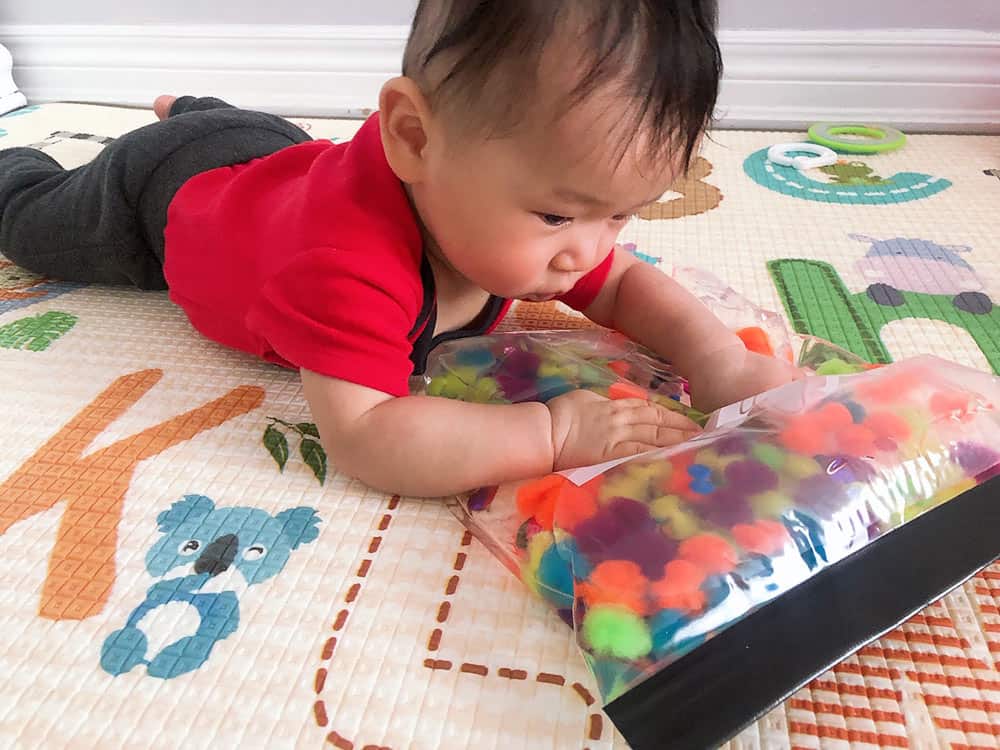The Ultimate Guide to Infant Sensory Toys: Sparking Development & Joy
Welcome, super parents! Are you ready to dive into the colorful world of infant sensory toys? As dedicated caregivers, you know that the right playthings can work wonders for your baby’s development. In this comprehensive guide, we’ll joyfully explore the very best sensory toys designed to not only entertain your little ones but also to stimulate their ever-growing senses. Get ready to uncover a treasure trove of toys that will ignite your infant’s curiosity and bring heaps of giggles to playtime!
What Are Infant Sensory Toys?
Sensory toys are a parent’s secret weapon in helping their babies grow and discover the world around them. These are toys specially designed to stimulate an infant’s senses—touch, sight, hearing, taste, and smell. Stimulating these senses aids in developing cognitive and motor skills, making infant sensory toys not just fun but incredibly beneficial for your baby’s early development.
Why Sensory Play Matters
Infants are naturally curious, and through sensory play, they learn fundamental lessons about cause and effect, problem-solving, and the basics of physics, like gravity, all while building emotional and cognitive skills. Moreover, sensory toys can lay the groundwork for a lifelong love of learning—how amazing is that?!
Top Sensory Toy Categories to Explore
- Textured Toys: These are all about touch! Textured balls, soft blocks, and plush toys with various fabrics encourage fine motor skills and tactile exploration.
- Visual Toys: Anything that captures your little one’s gaze counts. Think light-up toys, colorful stacking rings, and high-contrast black-and-white cards for the youngest of eyes.
- Auditory Toys: Let’s make some noise (the good kind)! Musical toys, rattles, and chimes help infants develop a sense of hearing and rhythm.
- Taste and Scent: While we ensure toys steer clear from infant mouths, some toys are designed to be safe for teething and exploration. Always choose non-toxic, FDA-approved toys for this category.
Before we delve deeper into each category, let’s cover some essential tips for selecting the perfect sensory toy for your baby.
Choosing the Right Sensory Toy for Your Baby
As you stroll through the toy aisles (or scroll through endless online options), keep these points in mind:
- Safety First: The toy should be free from small parts, sharp edges, and toxic materials. Always check for safety certifications.
- Age Appropriateness: Look for toys that are suitable for your infant’s age group. This ensures that they’re developmentally appropriate and safe.
- Variety: A good mix of toys that cater to different senses encourages overall development and keeps your baby engaged.
- Educational Value: Consider whether the toy teaches new concepts or skills that are beneficial for your infant’s growth.
- Durability: Infants aren’t known for their gentleness. Choose toys that can withstand the enthusiastic play and occasional ‘taste test’.
With these tips in your parenting toolkit, you’ll be well on your way to selecting sensational sensory toys that your baby will love and learn from. Read on as we delve into the specifics of textured toys, which are guaranteed to keep those tiny fingers moving and exploring!
Remember, embracing sensory play is not just about the toy itself; it’s about fostering a playful, loving environment where your baby can thrive. Each giggle and grasp is a step toward a wonderful world of learning. So go ahead, let’s bring some fun into those fundamental early years and watch as your infant blossoms into a bright and joyful little bean!
Stay tuned for the next chapter where we’ll unravel the magical world of visual toys that will surely catch your baby’s eye. We’ll explore the benefits of high contrast patterns, the wonder of colors, and the importance of visual tracking in infant development. It’s going to be a real treat for those little peepers, so don’t miss it!

5 Things Parents Should Know in Preparing for Infant Sensory Toys
Starting your infant’s adventure with sensory toys can be exhilarating! To prepare for this developmental journey, here are five vital things all parents should know:
1. Safety Assessments Are a Must
Before introducing any new toy, assess it for safety. Check for any loose parts, sharp points, or detachable items that could pose a choking hazard. Ensure that the materials used are non-toxic and that the toys are sturdy enough to handle a little rough play without breaking. Look out for certifications from recognized safety standards organizations which can often be found on the packaging or product description.
2. Meeting Developmental Milestones
It’s crucial to choose toys that are in line with your baby’s developmental stage. For infants who are working on grip and hand-eye coordination, toys that can be easily grasped and squeezed are ideal. As your baby grows, they will reach new milestones, and the types of sensory toys you introduce should evolve accordingly. Research the typical developmental milestones for your baby’s age group to select the most suitable toys.
3. Create a Stimulating Environment
Sensory play isn’t confined to toys alone. You can create an enriching environment for your infant by incorporating a mix of textures, colors, and sounds around them. Use soft blankets, wall art, and even everyday items like spoons or silicone cupcake liners that are safe for babies to explore under your supervision.
4. Balance and Moderation in Play
While sensory toys are fantastic for development, it’s essential to find a balance and not overwhelm your infant with too much stimulation. Start with short play sessions and be attentive to your baby’s cues. If they seem overstimulated or tired, give them a break. The key is moderation and following your infant’s lead on when to play.
5. Cleanliness and Hygiene
Babies explore with their mouths, so keeping sensory toys clean is paramount. Choose toys that are easy to clean and sanitize, and develop a regular cleaning schedule. Check the manufacturer’s instructions for any specific cleaning guidelines to maintain the integrity of the toy and ensure it remains safe for your baby to handle.
Deep Dive into Textured Toys
Textured toys offer exciting tactile experiences for infants, allowing them to distinguish between smooth, rough, soft, or bumpy surfaces. Playing with textured toys can enhance fine motor skills and build neural connections in the brain. When choosing textured toys, think about the variety of textures that will be both engaging and soothing for your infant. Examples include a soft, furry stuffed animal for cuddling and a silicone teether with nubs for gum massage and exploration.
As you consider integrating sensory toys into your baby’s playtime, it is the quality of the experience that matters most. Creating joyful and interactive moments around tactile play with fun, textured toys not only benefits your baby’s sensory development but also strengthens the precious bond between you and your little one. Let every touch be a moment of connection and learning!
Keep an eye on our guide as we continue to explore the fascinating sensory world that awaits your baby. We’re committed to helping you make informed decisions on the best toys to foster your infant’s growth. Happy playtime, parents—here’s to a joyful, sensory-rich journey with your adorable infants!
See more great Things to Do with Kids in New Zealand here. For more information see here
Disclaimer
The articles available via our website provide general information only and we strongly urge readers to exercise caution and conduct their own thorough research and fact-checking. The information presented should not be taken as absolute truth, and, to the maximum extent permitted by law, we will not be held liable for any inaccuracies or errors in the content. It is essential for individuals to independently verify and validate the information before making any decisions or taking any actions based on the articles.




